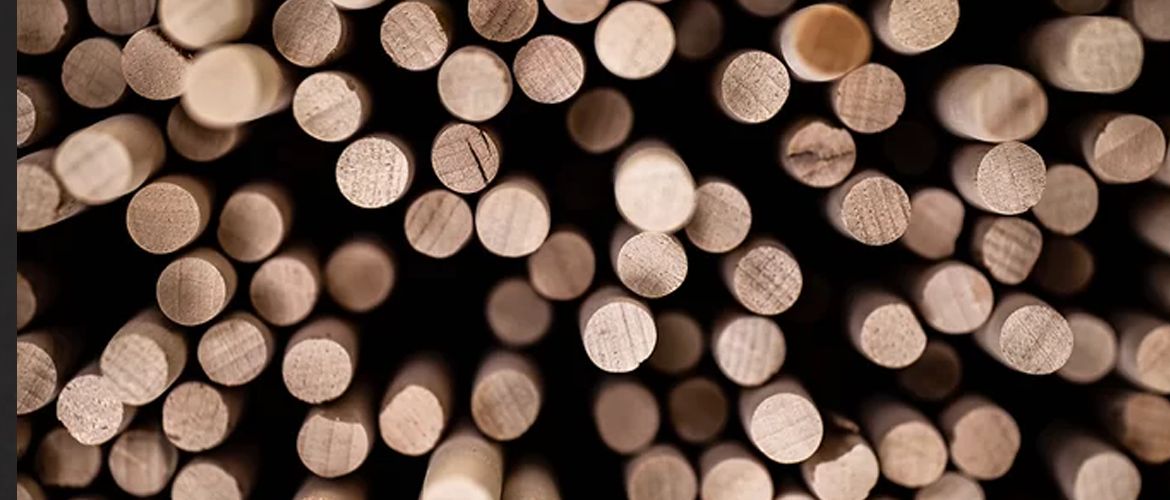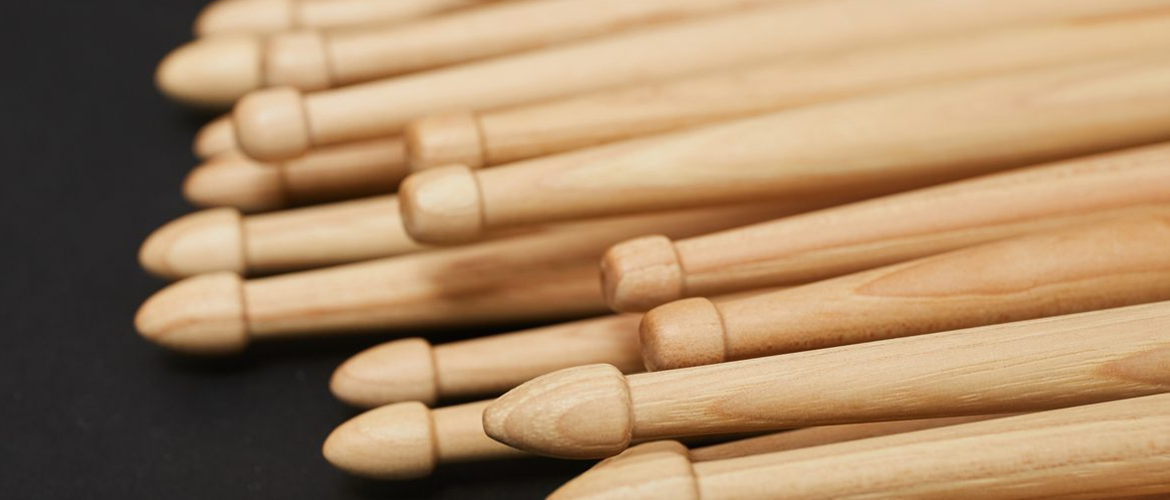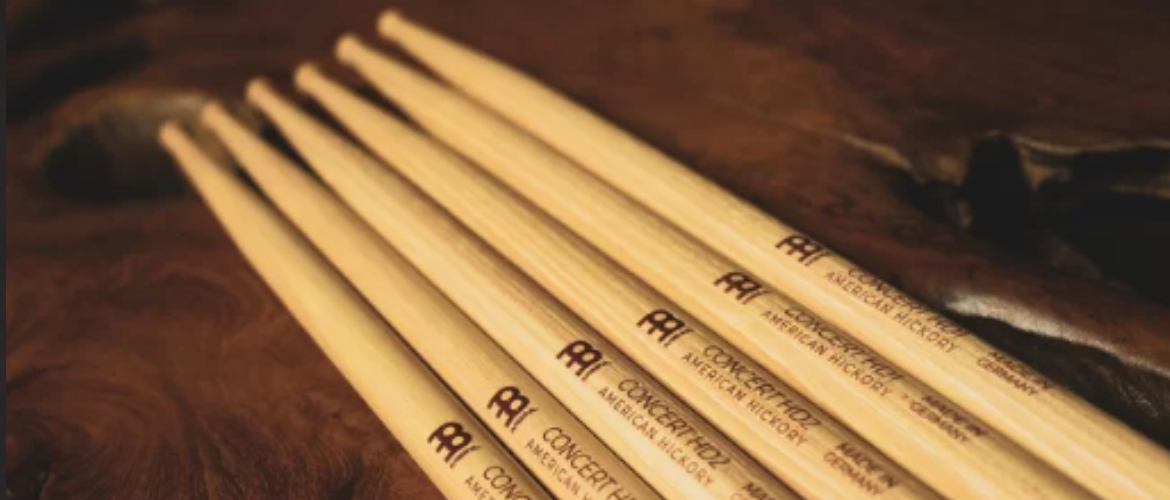{{item.name}}
{{item.attribute}}: {{item.attribute1}}
{{item.attribute2}}: {{item.attribute3}}
NRs {{item.price}} NRs {{Number(item.price) - ((Number(item.discount)/100 * Number(item.price)))}} NRs {{item.price}}
This item is not available now.

Drumsticks are, of course, most commonly made of wood, although you can also find ones constructed of carbon fiber, plastic or aluminum. Beyond the fact that they offer more rebound, the main advantage of those alternate materials is durability: those sticks last a lot longer than wooden ones. However, most purists insist that wood is the only way to go.
Weight, density, texture, resonance and flexibility all vary from one type of wood to another. The most popular woods used in drumsticks today are maple, hickory and oak, although birch, ash, rosewood, lancewood and ebony are also sometimes employed.

The weight and diameter of a drumstick is indicated by its number and letter — numbers range from 1 to 9, and letters from A to CC. The higher the number, the lighter the stick, so, for example, a 7A is lighter than a 5B. The letter indicates the stick’s diameter, so a 5B stick is thicker (that is, larger in diameter) than a 5A stick. This means, of course, that a 5B stick of the same length as a 5A stick will be heavier, too, but only slightly. The most common sticks in use today are 2B (a thick, heavy stick), 5A and 5B (intermediate diameter/weight), and 7A (thin and light).
Drumstick lengths generally run from approximately 15 to 17 1/2 inches and are categorized as small, medium, large, extra large and double extra large; the latter is used mostly in marching bands, where the sound really needs to project. The length of the stick you’ll be most comfortable with largely depends on the size of your hands, and, if you’re playing a drum set (as opposed to an individual marching or concert drum), how far away the different components are from where you’re sitting.
What makes things slightly complicated is that these three factors are largely interdependent, so it’s all a tradeoff. Played with the same degree of force, a stick with a thicker diameter creates a louder sound than one with a thinner diameter. However, a stick with a thinner diameter is both lighter and faster, and so it allows you to play with greater ease, though at the expense of volume. (Note that a thinner stick will also produce a more intense sound from the drum at lower volume levels, whereas a thicker stick requires more velocity to achieve that same sound intensity.) The length of the stick affects its leverage and reach around the drum set. Shorter and lighter sticks produce a more delicate sound and require greater effort to play louder. Longer and heavier sticks allow louder play with less effort.

The tip at the end of the stick is the part that comes into direct contact with drums and cymbals and so it has a major impact on the tone.
There are several different shapes of drumstick tips, including round, diamond, teardrop, acorn, arrow and barrel. Round tips strike the drum or cymbal with the same surface area regardless of the angle of the stick, so the sound is consistent. Because beginners do not usually have a steady stroke, a round tip helps to smooth out their sound. Because barrel tips tend to be the largest and heaviest tip types, they generally produce the loudest sound and so are suitable for rock music or whenever you need to be heard over amplified instruments. With other types of tips, drummers can create different nuances by altering the angle of the stick and thus the surface area of the tip that contacts the drum head or cymbal. Musical genres that demand a more delicate and varied expression are therefore best played with diamond, teardrop, acorn or arrow-tip drumsticks.
In addition to the shape, the material a tip is made of also affects the tone. Often the tip is the same wood as the rest of the drumstick, but there are also sticks with tips made of plastic or nylon. Plastic is harder than wood, so the attack is more delineated; as a result, using sticks with those kinds of tips results in a harder, cleaner tone. Nylon tips are much more durable than either wood or plastic, but when used on cymbals can produce an unpleasant over-bright sound.

A drumstick’s taper refers to the length of the distance between its full diameter and the point where it meets the tip. Taper is a big factor in a stick’s balance and also in how quickly it rebounds (sticks with no taper have almost no rebound). A stick with a long taper has more “give” and offers a faster response, while a stick with a short taper will be stiffer and therefore provides additional strength. If you’re a heavy hitter or mainly play rock/metal, short taper sticks will probably work best for you. If you play jazz or other genres that require more dynamics, go for long taper sticks. If you’re looking for a versatile stick that can play any genre, medium taper sticks are the best choice.

As we stated at the beginning of this article, when it comes to drumsticks, one size does not fit all. A 7A is a good choice for someone with small hands, like a young student, while a 5A or 5B will work best for average-size teenage or adult hands.
A good way to audition drumsticks is to gather a number of them of different sizes. Then take the thinnest, lightest stick and wave it around, followed by the thickest, heaviest one.Finding the correct drumstick is a crucial element in developing proper technique.
Finally, before you buy a pair of wooden drumsticks, roll them on a flat surface to make sure they are straight and not warped (the tips should not be bobbing up and down). Try to find a pair that rolls evenly, with the tip remaining centered as it rolls. In addition, take a moment to gauge the relative weight of each stick in your hands — each should ideally weigh the same.
Looking to buy a pair? Check out the various options available at our website.
https://bassandtreble.shop/shop?list_type=all&category_id=&product_type_id=8&search=